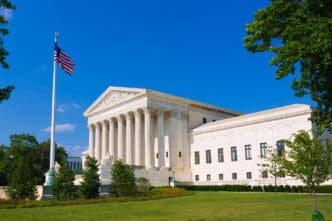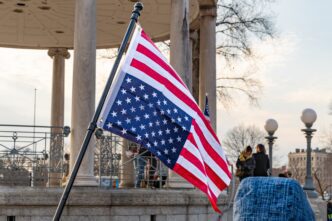Executive Summary
The Story So Far
Why This Matters
Who Thinks What?
The US Department of Agriculture (USDA) has ordered states to halt full food stamp benefits for November and to “immediately undo” any full allotments already issued. This directive, sent on Saturday, November 9, 2025, follows a Supreme Court justice’s decision on Friday to pause a lower court mandate requiring the agency to pay full assistance. States are now instructed to revert to providing 65% of the Supplemental Nutrition Assistance Program (SNAP) allotments, a move that introduces uncertainty for roughly one in eight Americans who rely on the program.
USDA’s Directive and Consequences
The USDA’s Saturday memo, obtained by CNN, explicitly stated that any full SNAP payment files sent for November 2025 were “unauthorized.” The agency ordered states to “immediately undo” any steps taken to issue full benefits for the month.
States that fail to comply with this directive risk the cancellation of federal cost-sharing for the SNAP program. They could also become financially responsible for any over-issuances of benefits to recipients.
Legal Battles and Shifting Guidance
The latest guidance marks multiple shifts in USDA directives over the past week, as lawsuits concerning the agency’s decision not to tap into a contingency fund for November benefits have progressed through federal courts.
Just one day prior, on Friday, November 8, 2025, the department had issued a memorandum indicating it was working to fully fund food stamp benefits for November to comply with a federal lower court order, with the process expected to be completed that same day.
Supreme Court Intervention
Supreme Court Justice Ketanji Brown Jackson temporarily paused a lower court order on Friday evening, siding with the Trump administration in a short-term capacity. The ruling came amidst a legal confrontation linked to the ongoing government shutdown.
Justice Jackson’s decision meant the USDA was not immediately required to transfer $4 billion to the vital food assistance program, effectively delaying the full funding mandate.
Lower Court Rulings
Justice Jackson’s ruling reversed a decision made a day earlier by US District Judge John McConnell in Rhode Island, who had directed the agency to make full payments. Judge McConnell’s more expansive ruling had mandated that the agency reallocate tariff revenue designated for child nutrition programs to cover full SNAP benefits for November.
This previous order by Judge McConnell had itself reversed his earlier ruling from earlier in the month, which had required the USDA to tap into its $5.3 billion contingency fund to pay at least partial benefits for the month.
Program in Limbo
The food stamp program has been in a state of legal uncertainty since October when officials announced that recipients would not receive their November payments due to a lapse in government appropriations for the government.
This decision prompted two lawsuits, leading federal judges to rule that the agency must provide at least partial benefits or, at its discretion, full allotments. The USDA initially opted for partial payments, revising the figure from 50% to 65% of the maximum benefit.
State Reactions and Actions
Several states reacted swiftly to the fluctuating guidance. Pennsylvania Democratic Governor Josh Shapiro announced Friday that residents would begin receiving full payments, with a spokesperson later confirming the benefits were spendable.
Wisconsin immediately requested 100% of its residents’ benefits to be placed on their electronic benefit transfer cards. This action resulted in the state overdrawing its letter of credit by $20 million after the USDA rejected the request due to insufficient time to comply with Judge McConnell’s order.
Kansas also issued full benefits totaling nearly $32 million to approximately 86,000 households. Kansas Democratic Governor Laura Kelly affirmed the state’s action, noting that recipients, many of whom are children, seniors, or people with disabilities, were struggling to secure food.
Maryland Democratic Governor Wes Moore criticized the administration’s guidance, describing it as “intentional chaos” and expressing concern that states fronting money would be penalized. North Carolina, which had issued partial benefits to over 586,000 households on Friday, paused its plans to issue full benefits following the Supreme Court’s decision. North Carolina Democratic Governor Josh Stein called for a swift resolution by the courts and “some humanity from the Trump administration.”
Outlook for Beneficiaries
The rapidly evolving legal landscape surrounding federal food assistance has created significant operational challenges for states and uncertainty for millions of beneficiaries. The USDA’s latest directive to halt and undo full November SNAP benefits underscores the complex interplay between judicial rulings, executive agency actions, and the critical needs of vulnerable populations during a period of government fiscal instability.








